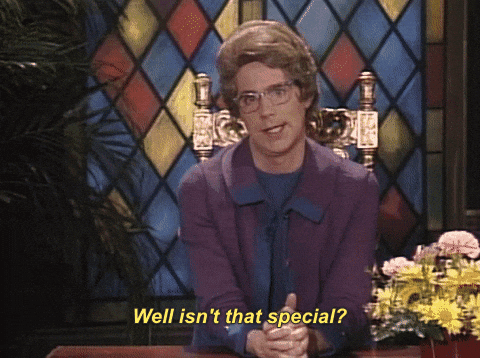We live in a world that is more and more distracted. The alarms on our phones wake us up first thing in the morning, and we’re checking our email and messages before we clear the sleep out of our eyes. We switch from smartphone screen to laptop screen to tablet screen. We scan our phones while talking or watching tv or eating a meal. This constant information stream and entertainment consumption has shortened our attention spans, impacted our critical thinking skills, and made distraction and multitasking the norm.
More and more, we live online. Let’s put it in numbers:
We’re losing focus, losing time, and losing productivity by being ever-engaged with the very tools that were supposed to help us be more efficient and effective.
There’s a reason why companies like Google, General Mills, and Aetna have turned to mindfulness trainings to keep their employees engaged.
Here’s how mindfulness can balance out the constant distraction and help you and your team be not just more productive, but calmer, happier, and smarter.
Wait. So. What is mindfulness?

What the heck is mindfulness anyway? The term is bandied around a lot, but what exactly *is* it?
Put simply, mindfulness means paying close attention to the present moment. It’s not just any kind of attention, though. It’s gentle, nonjudgmental attention to what’s right in front of you.
Jon Kabat-Zinn, a Professor of Medicine who’s kinda a big deal when it comes to mindfulness in America, developed a mindfulness practice to help his clients deal with chronic pain. He puts it this way: “Mindfulness is awareness that arises through paying attention, on purpose, in the present moment, non-judgmentally. It’s about knowing what is on your mind.”
I think a lot of people imagine that mindfulness at work means stopping in the middle of the day to sit on a meditation cushion, light some candles, and maybe go into a trance.
But mindfulness is much simpler and can be cultivated in everyday practices by training your brain to pay this special kind of attention, no matter what you’re doing. You can practice mindfulness while waiting in line for your coffee, driving to your daughter’s football game, or working on your latest blog post.
Think of mindfulness as strength training for your brain.
In January, when you first make it to the gym after two months of holiday carb splurges, of hit movies instead of HIIT workouts, it’s pretty tough.
You may feel discouraged by how hard it is. But, you hold in your mind how awesome you always feel when you get your regular workout on. You focus on how you want to wear those jeans you love or how much you want to be able to beat your brother at touch football next year.
In the same vein, training your brain with mindfulness techniques can be hard at first. What makes it even harder is that it may be difficult imagine the benefits — they may seem a lot more subtle than tighter abs and more energy. Let’s take a closer look at what science says are the kickbacks of mindfulness.
What are the benefits of mindfulness?

Mindfulness is out-of-control good for you. It comes with so many bonuses, and many of them will superpower your workday.
Think better.
To be great at your job, any job, you need your head in the game. Training your brain makes you think better. These two pretty rad studies have shown that meditation training and mindfulness techniques boost:
- Working memory
- Attention span
- Ability to screen out distraction
- Skill at incorporating new facts
- Visuospatial processing (i.e., processing information about where objects are in space)
Do you need any of those powers on your team?
Master your emotions.
“Between stimulus and response, there is a space,” wrote Victor Frankl. “In that space is our power to choose our response. In our response lies our growth and our freedom.”
Mindfulness helps you make that space a little longer. It doesn’t make negative or strong emotions go away. But it does help you work through them. The U.S. Marines implemented a mindfulness program and found that it reduced:
- Anxiety
- Stress
- Depression
- Insomnia
One Marine reflected, “After the course, I wasn’t scatterbrained anymore. I had no problem concentrating when I was upset. I can’t think of any aspect of my life that it hasn’t helped me with.”
Practicing mindfulness can help you keep your cool when things don’t go your way at work, perform through anxious or stressful moments, and focus through your emotions.
Be a better person.
It may seem hard to believe that such a simple action — paying better attention — can make you a better person, but it can.
A recent study suggests that participating in regular mindfulness techniques may make you more compassionate. When witnessing someone in need, regular meditators were more than three times more likely to help than non-meditators.
And we already know that giving more is good for your business. You won’t just be a better person, you’ll be better at your job, too.
How do I get going?

Oh, great! You’re ready to try it out. There are tons of ways to go about getting started with developing a mindfulness practice at work. Here are a few.
Start where you are.
Mindfulness is all about being present in the moment at hand. You already know how to do that. We all do. When we step away from our computers and smartphones, pause, and take a deep breath, we begin to tune into the present in a more mindful way.
Here are some things you can do right now:
- Set an intention at the start of each day to be more mindful. Before you open your email, check Facebook, or brush your teeth, commit to paying more attention to the present moment.
- Pay attention using your senses. Mindfulness is not all about the mind. Dropping into your body and paying attention to what you see, hear, and feel is often a shortcut to present attention.
- Observe your thoughts rather than engaging in them. This is a good way to create space around your thoughts so you aren’t so deeply engaged in them that you forget to pay attention to them. Here are some visualizations that may help you detach from your thoughts.
- Your thoughts are trains passing through the station. You don’t need to catch any train, you can just stand on the station and watch them pass by.
- You are a blue sky. Your thoughts are just clouds passing by. Let them just drift on past without holding on to them. No matter how stormy it gets, underneath those clouds is the constant of calm blue sky.
- Be a single-tasker. Multitasking is a real killer. It can ruin your focus, fritter away your energy, and impede productivity. It also makes it really hard to pay attention to the present moment. It’s hard enough to step back from one task, but when you have seven browser tabs, five Slack channels, and a text message calling your name, it’s next to impossible.
- Focus just on the single important thing in front of you.
- Use an app like One Tab to streamline your browsing workflow and spotlight just the one item you’re looking at.
- Use your Do Not Disturb modes to quiet chat channels, desktop notifications, and smartphone buzzes. We promise the world won’t end because you stepped back to focus for 45 minutes (even though it may feel like it).
- Pick an anchor. Choose an action that will serve as a reminder throughout your day to be more mindful. For example, you may set out to be more present whenever you switch tasks, before you make a conference call, or whenever you get up from your desk.
Start with apps.
Take a real break. Put your phone on Do Not Disturb, plug in your headphones, and start your mind workout at work.
- Headspace focuses on 10-minute meditations. They are heavily guided and move you slowly through more and more advanced mindfulness techniques. After you get the fundamentals down, you can focus on tracks, such as Performance, Creativity, and Balance. (Subscription required after 10 free meditations.)
- Calm’s pretty interface will immediately put you at ease. The setup is pretty similar to Headspace but has the added bonus of calming nature sounds and beautiful images that might help transport you out of the office. (Subscription required after free meditations).
- Buddhify is nice because you get all the mindfulness goods without the subscription cost of apps like Headspace and Calm. It comes with over 80 meditations, organized in a pleasant rainbow wheel by need or location. They range from “Can’t Sleep” to “Work Break.”
Start with a book.
If a book is more your speed, curl up with one of these. Or plug into the audiobook version.
- Mindful Work by David Gelles breaks down why mindfulness is so important in business. He provides real-world examples of how to incorporate it into your daily routine. This book gives you both the info you need to start your own practice and the data that will help you convince your team that mindfulness is worth their time.
- Joy on Demand by Chede-Meng Tan is a (not surprisingly) very uplifting book written by the engineer who pioneered mindfulness practices at Google. Meng mixes funny observations about himself and life with a clear, easy, practical guide to incorporating more mindfulness into your everyday life.
- Awakened Company by Catherine Bell helps you move, as an organization, from reactive to proactive. By prioritizing mindfulness techniques, not just in each individual employee but in the company’s general culture and ethos and by developing a mindfulness-based strategy, your organization can evolve.
Start with a class.
Oh, so you’re ready to double down? Way to go! A course is a great way to really jumpstart a daily mindfulness practice.
- Coursera offers a nice introduction to mindfulness. It gives you both foundational info — from the philosophical beginnings of mindfulness to the psychology of it — and Meditation Labs where you can practice what your profs are preaching.
- Palouse Mindfulness introduces the basics of Mindfulness-Based Stress Reduction (MBSR), modeled after the Jon Kabat-Zinn’s successful 8-week course.
- Your local yoga studio or meditation center may also have courses and can likely help you find resources to bring mindfulness education into your organization.
So there you have it, our guide to getting started with mindfulness in your business. Are you looking for more ways to make your organization more holistic? Check out our 5 things you can give in sales.
Caitlin got her roots in inbound marketing before it got its name. As a teenager in the 90s, she promoted her independently published magazines by writing about the importance of indie publishing all over AOL. Now, Caitlin is passionate about moving people and society forward. She follows thought leaders in the National Speakers Association, the staffing industry, and all human rights movements. She loves learning and helping people learn.






































